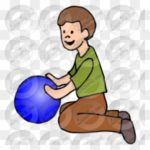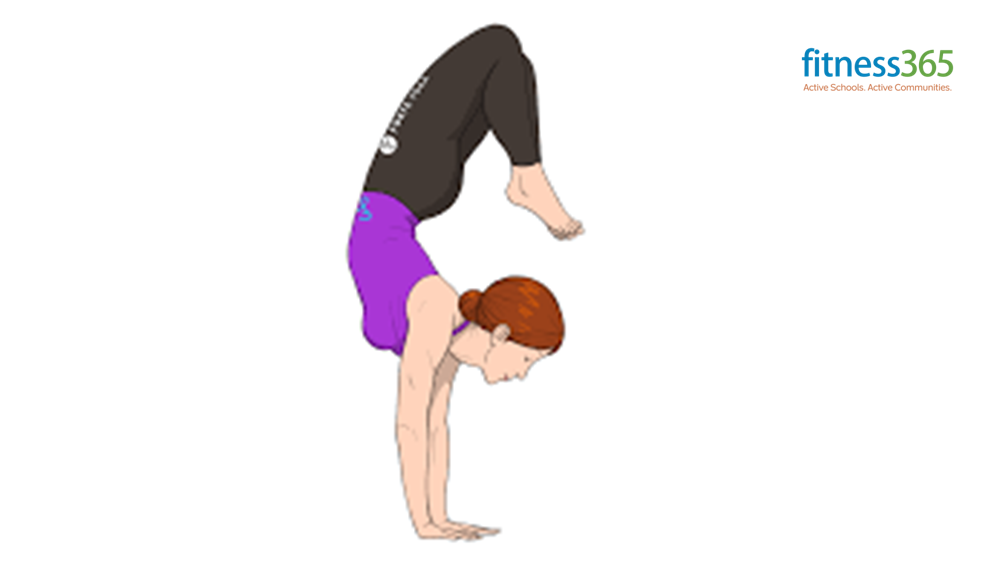
by Neetu | Jun 18, 2020 | Fitness Activity
Posture: Vrischika-asana (The Scorpion Pose)
(Pronunciation: vrik-shah-sa-na)
Description:
Vrischika is the Sanskrit word for scorpion. This posture is so named because the body resembles a scorpion with its tail arched above its head ready to sting its victim. Although it may not be a simple posture for beginners to perform, the Scorpion is not as difficult as it may at first seem.
Performing Instructions
- Kneel on the floor and lean forward placing the elbows and forearms flat on the floor with the palms facing down. Your arms should be placed about shoulder-distance apart.
- Extend your head forward and lift it as high as possible.
- Raise the buttocks and place the feet firmly on the bottoms the toes.
- Inhale a swing the legs up and over the head while maintaining your balance. Bring the legs straight up over your head.
- Slowly bend the knees and drop the legs toward the head being careful not to move too quickly or drop the legs to far while maintaining balance.
- Reverse the steps above and return to a kneeling position.
Comments:
The Scorpion should not be attempted until you are comfortable with all the balance postures (e.g.: Vriksha-asana, Ekapada-asana, etc.) as well as the Headstand (Sirsha-asana). Beginners should do this posture under the supervision of a qualified teacher. When first attempting the Scorpion asana you may want to try it while facing a wall. Position yourself so that when you are doing step #1 above your head is about 2 – 3 feet from the wall. This way if you lose your balance you can use the wall for support.
This posture will provide maximum stretch to the neck, spine, and chest. It combines many of the benefits of the Chakra-asana (the Wheel posture) and the Sirsha-asana (the Headstand).
Duration/Repetitions
Hold the vrischika-asana for as long as you are comfortable. Keep in mind that returning from the posture gracefully without falling out of it will take some strength, so don’t hold it too long. 20-30 seconds is fine for early attempts, increase the time gradually as you become more proficient.
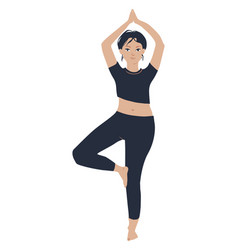
by Neetu | Jun 18, 2020 | Fitness Activity
Posture: Vriksha-asana – The Tree Pose
(Pronunciation: vrik-shah-sa-na)
Description:
The Sanskrit word vriksha means tree, thus this is the Tree Posture.
“Standing straight on the left leg, bend the right leg and place the right foot on the root of the left thigh. Stand thus like a tree on the ground. This is called vriksha-asana.”
Performing Instructions
- Stand with the feet together and the arms by your sides (see the tad-asana).
- Bend the right leg at the knee, raise the right thigh, and bring the sole of the right foot as high up the inside of the left thigh as possible.
- Balancing on the left foot, raise both arms over the head keeping the elbows unbent and joining the palms together. Hold the posture while breathing gently through the nostrils for about 10 complete breaths.
- Lower the arms and right leg and return to the tad-asana, standing position with feet together and arms at the sides. Pause for a few moments and repeat on the opposite leg.
Comments:
The challenge of the vriksha-asana is maintaining balance on one leg. Poor balance is often the result of a restless mind or distracted attention. Regular practice of this posture will help focus the mind and cultivate concentration (dharana).
When practicing vriksha-asana it may help to imagine or picture a tree in the mind and apply the following technique: Imagine that the foot you are balanced on is the root of the tree and the leg is the trunk. Continue by imagining the head and outstretched arms as the branches and leaves of the tree. You may be unsteady for a while and find the body swaying back and forth, but don’t break the concentration. Like a tree bending in the wind and yet remaining upright, the body can maintain balance.
Aim to achieve the “rootedness” and firmness of a tree. Regular practice of the vriksha-asana improves concentration, balance and coordination. Because the weight of the entire body is balanced on one foot, the muscles of that leg are strengthened and toned as well.
Duration/Repetitions
Hold the vriksha-asana as long as you comfortably can. Repeat it two or three times on each leg.
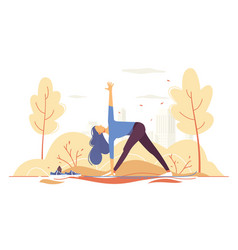
by Neetu | Jun 18, 2020 | Fitness Activity
Posture: Trikona-asana – The Triangle Pose
(Pronunciation: tri-cone-ah-sa-na)
Description:
The Sanskrit word tri means three and Kona means corner or angle. Thus “three corners or three-angle posture” is often called the triangle posture. This posture is also known as the utthita trikona-asana. Utthita means stretched or extended thus this is the Extended Triangle Pose.
Performing Instructions
- Stand with the feet together and the arms by your sides (see the tada-asana).
- Separate the feet slightly further than shoulder distance apart.
- Inhale and raise both arms straight out from the shoulders parallel to the floor with the palms facing down.
- Exhale slowly while turning the torso to the left, bend at the waist and bring the right hand down to the left ankle. The palm of the right hand is placed along the outside of the left ankle. The left-arm should be extended upward. Both legs and arms are kept straight without bending the knees and elbows.
- Turn the head upward to the left and gaze up at the fingertips of the left hand. Inhale and return to a standing position with the arms outstretched.
- Hold this position for the duration of the exhaled breath. Exhale and repeat steps 4 – 6 on the opposite side.
Comments:
The trikona-asana is an excellent posture to do early in your routine. The forward bending and lifting stimulates blood flow and helps to stretch and relax the back, shoulders, legs, and arms as well as increases the flow of blood to the head. The muscles of the thighs and calves, as well as the hamstrings, are stretched. The slight twist of the spine creates suppleness in the spinal discs and relieves lower back discomforts.
The posture can be held longer by breathing gently through the nostrils rather than holding the breath. Another variation is to perform the trikona-asana rapidly thereby giving it a slightly aerobic effect.
Duration/Repetitions
Remain in the forward bending position for the duration of the exhale breath. Do two or three repetitions (one repetition consists of bending forward on both sides).
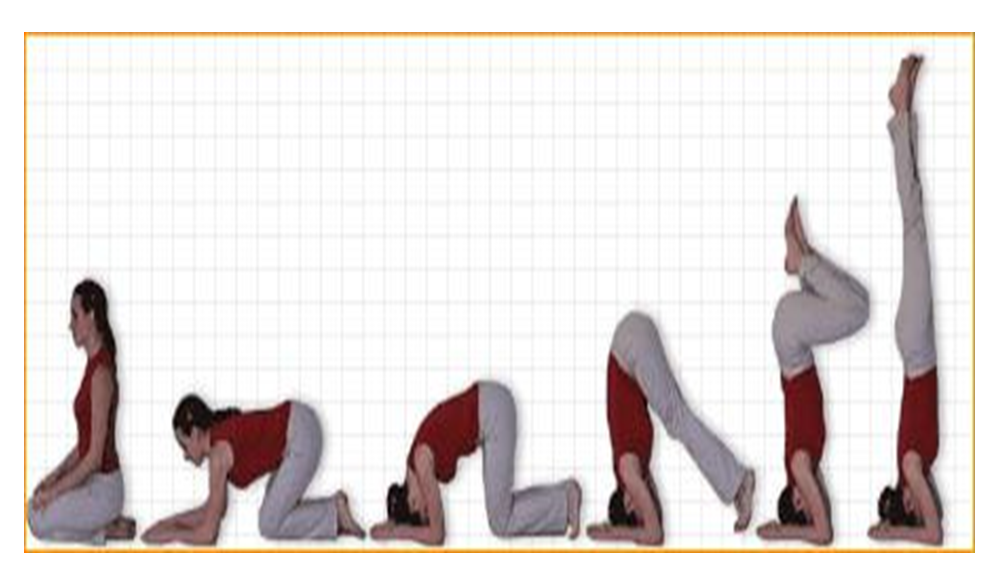
by Neetu | Jun 18, 2020 | Fitness Activity
Posture: Sirsha-asana – The Head-stand
(Pronunciation: sir-shah-sa-na)
Description:
The Sanskrit word sirsha means head. This posture is the well-known headstand posture and perhaps second only to the Padma-asana or lotus posture, is widely identified with the practice of Yoga.
Performing Instructions
- Sit in a kneeling position with the buttocks resting on the heels of the feet.
- Lean forward and place the forearms on the floor in front while keeping the elbows about shoulder distance apart. Interlock the fingers of both hands.
- Place the top of the head flat on the floor with the back of the head pressed against the inside of the interlocked fingers.
- Placing the tips of the toes firmly on the floor while lifting the heels, raise the knees off the floor.
- Hold for the duration of the held inhaled breath. When you can’t hold the breath comfortable any longer, slowly exhale and return the back to the floor, slide the legs out straight returning to the shava-asana.
Comments:
The siddha-asana is complicated to describe but is actually one of the simpler sitting postures. It requires less flexibility of the legs than the padma-asana yet it facilitates relaxation, concentration and ultimately, meditation.
Siddha-asana helps to establish an equilibrium throughout the body/mind. It will also help stretch the legs and pelvic area to the point where the padma-asana can be held effortlessly. Either posture, by creating a firm foundation with the legs locked in a crossed position and the spine held straight and motionless, awakens the attention and helps cultivate concentration. When concentration is highly focused and undistracted, meditation follows.
Duration/Repetitions:
Hold the sirsha-asana for 15-30 seconds when you first attempt it and increase the duration gradually over a period of a few weeks. As you skill increases you should hold it for as long as you feel comfortable.
Cautions/Restrictions:
If you are new to Yoga we recommend that you find a qualified instructor to teach you this posture and monitor you performance. If you attempting this alone position yourself in front of a wall as mentioned above.
If you are suffering from high or low blood pressure you should not attempt this posture.
The sirsha-asana should not be performed by woman who are menstruating, as is the case with all inverted postures (where the legs are raise over the head).
Variations:
There are several variations to the sirsha-asana that you can try when you are comfortable with the standard variation. First try spreading your legs wide apart, carefully separating them very slowly, while maintaining your balance, until they are as far apart as is comfortable. Bring your legs together before returning from the posture. Next, you can try placing the soles of your feet together while steadily holding the pose.
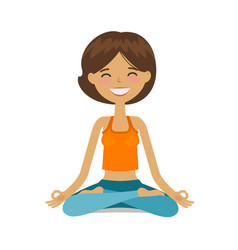
by Neetu | Jun 18, 2020 | Fitness Activity
Posture: Padma-asana – The Lotus Posture (Pronunciation: pud-mah-sa-na)
Description:
The Sanskrit word naga means snake or serpent. The naga-asana is also known as the bhujanga-asana. The Sanskrit word bhujanga, which also means snake, is derived from the root Bhuj which means to bend or curve.
Performing Instructions
- Sit on the floor with the legs stretched out straight in front.
- Bend the right knee and grasp the right foot with both hands and place it on top of the left thigh bringing the heel as close to the navel as possible.
- Bend the left knee and grasp the left foot with both hands and place it on top of the right thigh bringing the heel as close to the navel as possible.
- Both knees should be on the ground and the soles of the feet are pointed upward. The spine is held straight but not rigid.
- The position of the legs may be switched after a period of time if the posture becomes uncomfortable.
Comments:
When in the Padma-asana the hands can be placed in one of the following three positions:
- Place one hand on top of the other, both palms up, and rest the hands on the heels (this is known as the dhyana-mudra). This variation is recommended for meditation.
- Place the hands on the knees, palms down.
- With palms up, place the hands on the knees, form a circle with the thumb and forefinger, and extend the remaining fingers straight ahead (this is known as the chin-mudra). Recommended for pranayama (Yogic breathing).
The Padma-asana facilitates relaxation, concentration, and ultimately, meditation. The posture creates a natural balance throughout the body/mind.
Duration/Repetitions
The length of time to sit in the Padma-asana depends on your intention. In the course of a typical asana routine, you might hold it for several minutes or until you experience discomfort in the legs. When used as a meditation posture you hold it for the duration of the meditation.
Variations
If you find the Padma-asana difficult or painful, you can try the Ardha Padma-asana variation or half-lotus posture (Ardha means half). Instead of placing both feet on the thighs, only one foot is placed on top of the opposite thigh and the other is place under the opposite thigh. Periodically alternate positions to allow both knees to be stretched. Those who are unable to do either variation of this asana comfortably should
practice the buddha Kona-asana.










